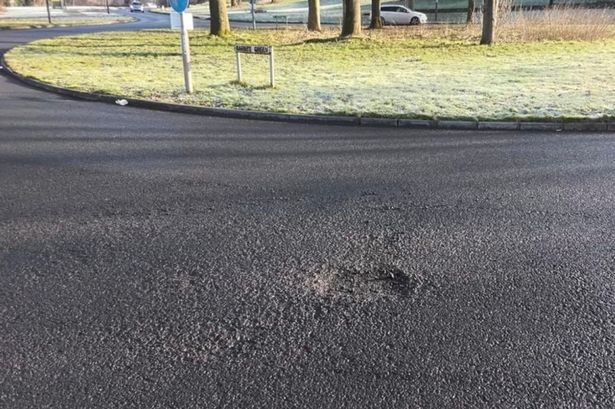The Derby City Council issued a public apology to residents following a road resurfacing project gone awry on a city street. Weeks after the completion of the new road surface, residents reported loose debris scattered across the road, presenting a potential hazard to vehicles and pedestrians. Initially, the council attributed the issue to “failed materials,” suggesting that the fault lay with the quality of the resurfacing materials used in the project. This explanation, however, proved to be premature and inaccurate. Further investigation revealed a more complex and concerning series of errors in the execution of the resurfacing project.
The council’s subsequent investigation uncovered a cascade of shortcomings in the project’s management and execution. It became apparent that the issue was not solely due to faulty materials, but rather a combination of factors including inadequate surface preparation, improper application of the resurfacing materials, and insufficient quality control measures throughout the project. The initial assessment blaming the materials was based on incomplete information and a rushed judgment before a thorough investigation could be conducted. The council acknowledged this misstep and expressed regret for the misinformation provided to residents.
The specific issues identified included inadequate cleaning and preparation of the existing road surface before applying the new layer. This compromised the adhesion of the new surface, contributing to its premature deterioration and the scattering of loose debris. Furthermore, the application of the resurfacing materials was found to be inconsistent, with variations in thickness and compaction leading to uneven wear and tear. Finally, the lack of robust quality control measures during and after the resurfacing process allowed these issues to go undetected until residents began reporting problems.
The revelation of these multifaceted failures underscored deeper systemic issues within the council’s oversight of road resurfacing projects. The incident highlighted deficiencies in project planning, communication, and quality assurance protocols. The council admitted that the initial response blaming the materials was symptomatic of a larger problem of inadequate investigation and a tendency to seek simple explanations rather than conducting thorough analyses. This incident prompted a comprehensive review of the council’s road resurfacing procedures and a commitment to implementing stricter quality control measures in future projects.
Following the investigation and the public apology, the Derby City Council outlined a series of corrective actions. These measures included retraining staff involved in road resurfacing projects, implementing more rigorous quality control checks at every stage of the process, and reviewing the procurement procedures for resurfacing materials to ensure they meet the required standards. The council also pledged to improve communication with residents, providing timely and accurate updates on road resurfacing projects and addressing concerns promptly and transparently. The aim of these actions is to prevent similar incidents from occurring in the future and to restore public trust in the council’s ability to manage infrastructure projects effectively.
The incident involving the failed road resurfacing project served as a valuable, albeit costly, lesson for the Derby City Council. The initial misstep of blaming the materials without a proper investigation not only damaged public trust but also delayed the implementation of effective solutions. The subsequent thorough investigation, however, allowed the council to identify the root causes of the problem and implement corrective actions that address the systemic issues within their road resurfacing procedures. The council’s commitment to transparency and accountability in addressing the situation, along with their pledge to improve their processes, offers hope that future projects will be handled with greater diligence and effectiveness, ultimately benefiting the residents of Derby. The incident serves as a reminder of the importance of thorough investigation, rigorous quality control, and transparent communication in public infrastructure projects.














